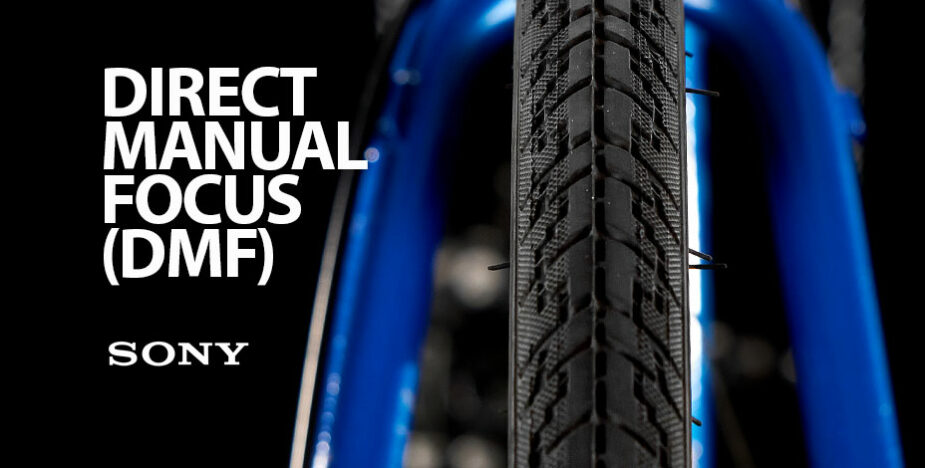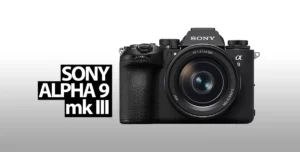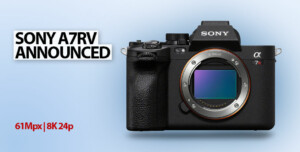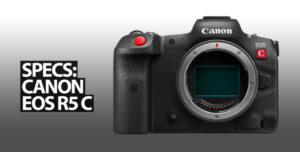Direct Manual Focus (DMF) is a hybrid focus mode on Sony Alpha cameras. It blends auto and manual focus into a single flexible mode. Here’s how I found out that Direct Manual Focus (DMF) is more fun than plain old Manual Focus (MF). I was photographing some bicycles in the studio recently and decided to use Manual Focus to ensure that the exact spot that I wanted would be in sharp focus. I also decided that I would use AF before refining my manual focus. I’d do this by setting the camera to Manual Focus, and then using the AF-On button on the back of the camera when needed. DMF does exactly this, just more easily.
After having used it in this way for a while, I decided to try out the inconspicuous, but ever-present DMF mode. Here’s what I found out about it… It’s exactly what I needed! Maybe you need to try it out too!
What is DMF Focus Mode in Sony Cameras?
The DMF Focus mode in Sony Mirrorless Cameras stands for “Direct Manual Focus“. The name doesn’t explain much so I’ll do that for you. DMF merges Auto Focus (AF) and Manual Focus (MF) modes in Sony Mirrorless Cameras, allowing you to adjust the focus manually after an initial AF lock. The best thing is that this mode can be used with any Sony autofocus lens.
When your lens is in AF mode, you can’t change the focus manually, unless you turn off AF using the button on your camera. In Direct Manual Focus (DMF) mode, the camera focuses in AF when the shutter release is half-pressed, and then hands over focus to the photographer.
What Does DMF Focus Mode Do?
DMF, in Sony mirrorless cameras, blends the control that you get when using manual focus, with the quick acquisition of Auto Focus (AF). It’s a mode that you’ll find on many of Sony’s cameras from the Sony A7iv, to their APS-C mirrorless range, to their vlogging camera the ZV-1, and even on the compact RX100 vii. So you’ll definitely find this information useful.
The difference between using DMF and MF is that when you’re using DMF, you half-press the focus button to get the subject into focus using autofocus. After that, you’re free to change the focus manually to whatever you prefer. When you’re using Manual Focus (MF), there is no half-press functionality. You’re always in control of the camera’s focus.
What is The Difference Between DMF and MF?
One of the nicest things about DMF is that it doesn’t feel like manual focus… That’s right! It’s AF first, and then the camera hands over focus to you…
When you half-depress the shutter release button, the camera acts as if it is in AF-S (Single-Shot AF) mode, and focuses on the closest object. You can then use the lens’s focus ring to adjust the focus as you’d like it, before taking a photograph.
Now, some of you may be saying that this isn’t very different in behavior from what you first described… using the camera in MF mode, and using the AF-ON button when needed, and that’s true. However, DMF may be useful to those who aren’t as yet comfortable with back-button focus … who keep forgetting to press the AF-On button.
An additional benefit is that you can simply use the camera as if it was in AF-S mode. If you have focus peaking turned on, then you get an additional way to visualize the in-focus areas that would normally not be possible in AF modes.
| Aspect | Direct Manual Focus (DMF) | Manual Focus (MF) |
|---|---|---|
| Focus Operation | Starts with autofocus (AF) and allows for manual focus adjustment while in AF mode. | Purely manual focus without the involvement of the camera’s autofocus system. |
| Control | Primarily controlled by the camera’s AF system, with manual adjustments as needed. | Fully manual control, requiring the photographer to adjust focus without assistance. |
| Use Case | Ideal for situations where autofocus is reliable but might need fine-tuning. | Best for scenarios where autofocus is unreliable or when full control is desired. |
| Precision | High precision with initial AF; manual adjustments allow for fine-tuning. | Precision depends entirely on the photographer’s skill and the lens used. |
| Speed | Faster initial focusing due to AF, followed by manual adjustment. | Slower as it depends on the photographer’s speed and accuracy in focusing. |
| Ease of Use | Easier for those not fully comfortable with manual focusing. | Requires more skill and experience to achieve sharp focus. |
| Flexibility | Offers a blend of automatic and manual control, providing flexibility in various situations. | Full manual control offers maximum flexibility but can be challenging in fast-paced situations. |
| Focus Peaking | Supports focus peaking during manual adjustments for enhanced accuracy. | Supports focus peaking, aiding in achieving sharp focus. |
| Focus Magnification | Often includes focus magnification to assist in manual fine-tuning. | Also typically features focus magnification for better manual focus accuracy. |
| Application | Useful in portrait, macro, or any situation where slight focus adjustments are critical. | Often used in landscape, astrophotography, or when using older lenses without AF. |
| Learning Curve | Lower learning curve due to initial AF assistance. | Higher learning curve as it requires mastering manual focusing techniques. |
| Battery Consumption | Potentially higher due to initial use of AF. | Generally lower as it doesn’t utilize the autofocus motor. |
| Lens Compatibility | Compatible with AF-capable lenses. | Compatible with all lenses, including those without autofocus capability. |
Does Sony DMF Work With Manual Focus Lenses?
DMF mode is actually meant to be used with autofocus lenses, and so, it does not work with manual lenses. While it does allow you to really get fine-grained with manual focusing, the initial step requires autofocus to work. With manual lenses, it’s probably better to simply set the camera to Manual focus mode.
How Can I Set Up My Camera to Use DMF?
You can set up DMF on your Sony Alpha camera in two ways:
- Set the focus mode from the main menu by pressing Menu > Focus > [AF/MF] > Focus Mode > DMF
- Set the focus mode from the Fn. menu by pressing the small Fn. button, and then changing the Focus Mode to DMF
What Are The Related Settings That Change The Way DMF Works?
Now that your focus mode is set to DMF, you have a few more options to change the way you focus, and so that you can visually ensure that your focus is spot-on.
- Turn on Focus Peaking (Peaking Display set to ON) to be able to see which areas are in focus, represented with a color that you can set (Red, Yellow, Blue, or White).
- Turn on Automatic Focus Magnifier in MF (Menu > Focus > Focus Assistant > Auto Magnifier in MF > On). This allows you to have a zoomed-in view (1x or 5.5x) of the image. You’ll want to set the duration of this focus magnifier function to about 2 seconds so that the magnified view turns off 2 seconds after you stop adjusting focus.
When Is DMF More Useful Than MF Mode?
DMF was useful when shooting product photographs in my studio, taking multiple close-up photographs of bicycles from different angles in quick succession. I felt that it was definitely easier to use than MF, but while still retaining the control that Manual Focus offers.
I found this mode to be quite useful when not photographing subjects that have specific AF modes… For example, when not shooting portraits (which can make use of eye-focus mode), or fast-moving objects which need AF tracking.
The official Sony website states that this mode is useful for portraits and macro photography. Personally, I think it isn’t very useful for portrait photography (Eye AF would be better), but could be quite useful in macro photography, or in any situation where you need fine control over focus. Of course, you can manually control the AF zones too, to get the same result.
So, Why Should I use DMF?
If you’re a Sony shooter, you’d choose the DMF focus mode when you’re trying to learn how to focus manually, or if you’re trying to get used to back-button focusing, but aren’t quite there yet. This is an interesting hybrid focusing mode with both AF and MF always on call, but with a stronger emphasis on Autofocus with manual focus as a backup.
This focus mode isn’t for everyone, and honestly, it feels a little amateurish… Still, I’m not ashamed to say that I enjoyed it and that it allowed me to get sharp focus quickly, and with less fiddling around. I could rely on the camera’s autofocus when I didn’t need to change anything, yet make manual changes quickly and easily.
Should you use it? I’d say, why not try it out? Let me know what you think when you do.
Help Us To Continue Creating
Get our email newsletter to stay up-to-date with our latest posts. It’s easy to read and is mailed once in 2 weeks.
The easiest way to support Beyond Photo Tips is by using our affiliate links when you buy anything at all. It will never cost you anything extra, and we get a small commission from it, which helps us a LOT! We share our recommended equipment list here.
Some of the links to products on this website are affiliate links, and we only ever link out to gear that we recommend.
You could also show your appreciation by buying us a coffee. Finally, we appreciate you being a part of the community, so do say hi!





